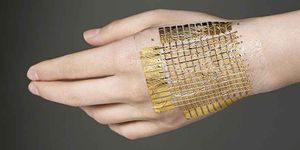Turning salt into water: new technology leads the way for desalination
As access to fresh water becomes scarcer, the search to find a resource efficient method of desalination becomes ever more urgent. According to the United Nations, 85% of the world population lives in the driest half of the planet and 783 million people do not have access to clean water. Every year, 6 to 8 million people die from the consequences of disasters and water-related diseases. As we continue to pump carbon dioxide into our atmosphere from our excessive use of fossil fuels, our planet continues getting drier and hotter, melting and evaporating crucial sources of freshwater that people, animals, and plants depend on.
Luckily, scientists from the University of Manchester, led by Dr. Rahul Nair, have developed a graphene oxide sieve that could potentially be highly efficient at filtering salts. Their results, published recently in the journal Nature Nanotechnology, introduce the membrane that will separate salts from water, producing potable water from salt water.
Graphene itself consists of a single layer of carbon atoms arranged in a hexagonal lattice. It has an extraordinary tensile strength and electrical conductivity, but as of now producing large quantities of single-layer graphene via a method called chemical vapour deposition (CVD) is painstaking and expensive. This is why the team began investigating graphene oxide, the cousin of graphene.
Dr. Nair stated that "Graphene oxide can be produced by simple oxidation in the lab.” He told BBC News, "As an ink or solution, we can compose it on a substrate or porous material. Then we can use it as a membrane. In terms of scalability and the cost of the material, graphene oxide has a potential advantage over single-layered graphene."
This graphene oxide option is more plausible than using a single-layer graphene because the single-layer is difficult to make permeable without letting the salt slip through. “You have to make a membrane with a very uniform less-than-one-nanometre hole size to make it useful for desalination. It is a really challenging job," Nair said.
The technology may have other uses as well. “The membranes are not only useful for desalination, but the atomic scale tunability of the pore size also opens new opportunity to fabricate membranes with on-demand filtration capable of filtering out ions according to their sizes,” said Jijo Abraham of University of Manchester.
Sources: BBC, The Hindu, Nature Nanotechnology









